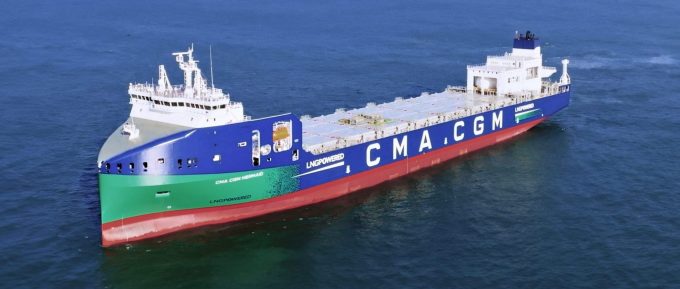USTR fees will lead to 'complete destabilisation' of container shipping alliances
The USTR fees for China-built shipping threaten a “complete destabilisation” of the ocean alliances, as ...

CMA CGM has taken delivery of the first in a series of 2,000 teu feeder vessels, in what appears an aggressive play for trucking cargo and drive modal shift from road to sea.
The LNG-fuelled CMA CGM Mermaid illustrates a departure in recent design, moving toward larger vessels.
The fore-mounted bridge, common to many of the newest containerships, despite present understanding of naval architecture being against them, allows the vessel better aerodynamics, as well as a higher loading capacity. CMA CGM also ...
Maersk u-turn as port congestion increases across Northern Europe
Apple logistics chief Gal Dayan quits to join forwarding group
Maersk Air Cargo sees volumes fall as it aims for 'margin in favour of revenue'
Airlines slash freighter capacity post-de minimis, but 'the worst is yet to come'
Houthis tell Trump they will end attacks on Red Sea shipping
Transpac rates hold firm as capacity is diverted to Asia-Europe lanes
MSC revamps east-west network as alliance strategies on blanking vary
India-Pakistan 'tit-for-tat' cargo ban sparks sudden supply chain shocks

Comment on this article